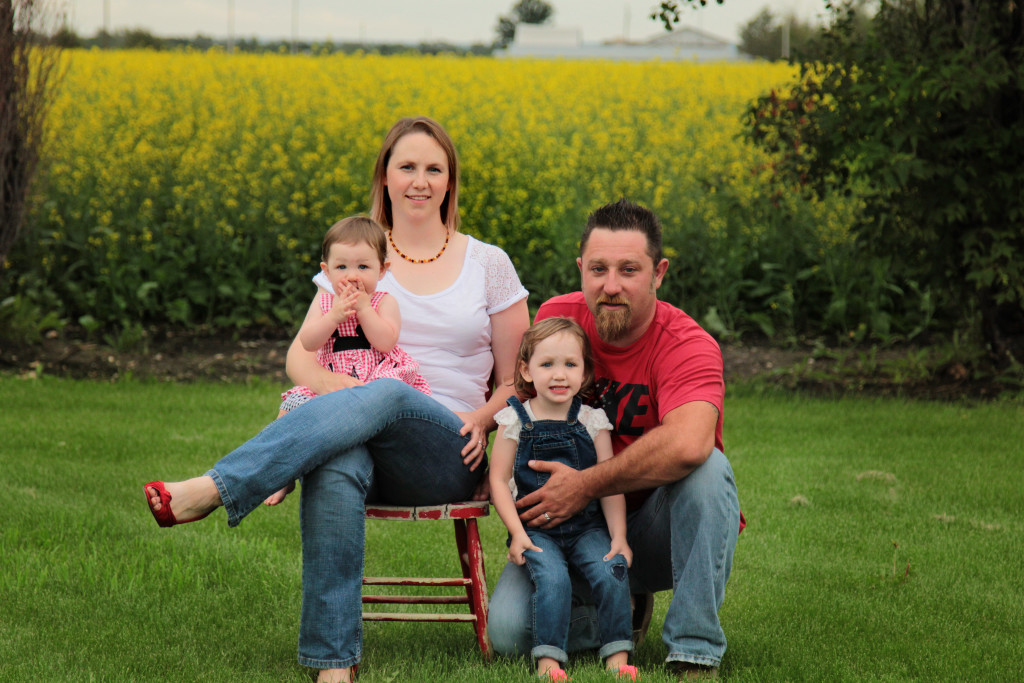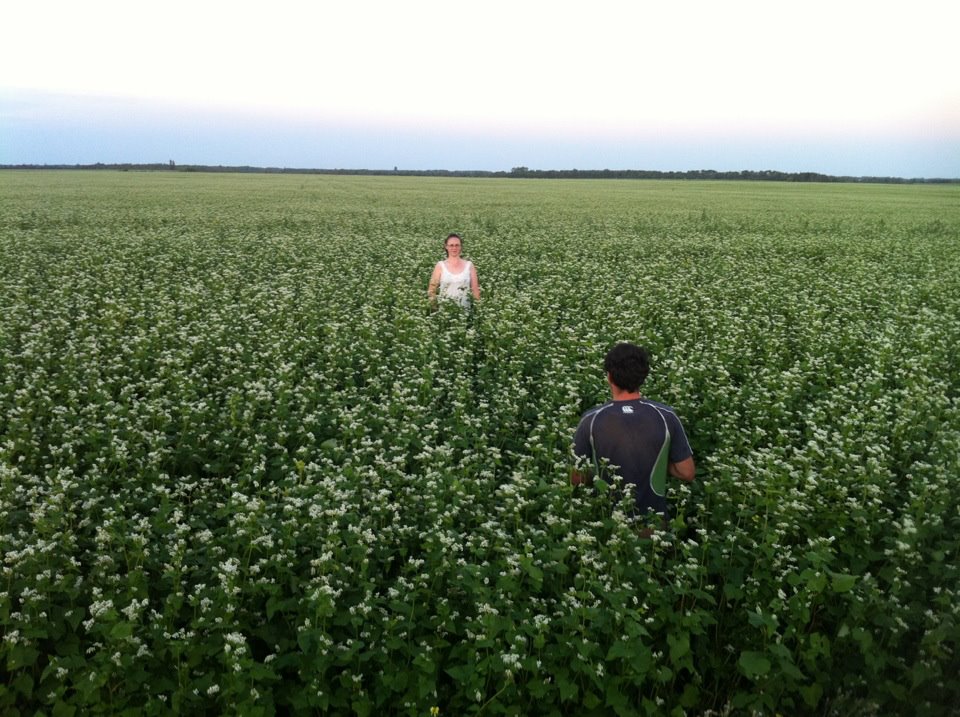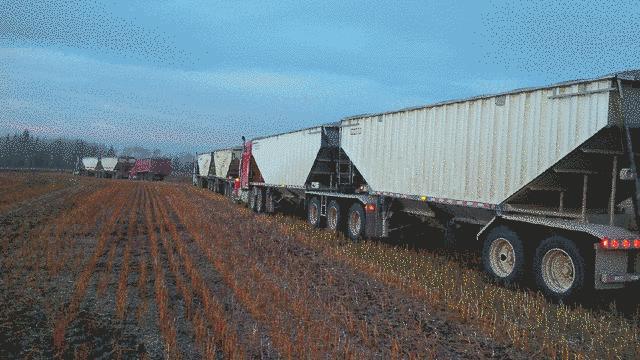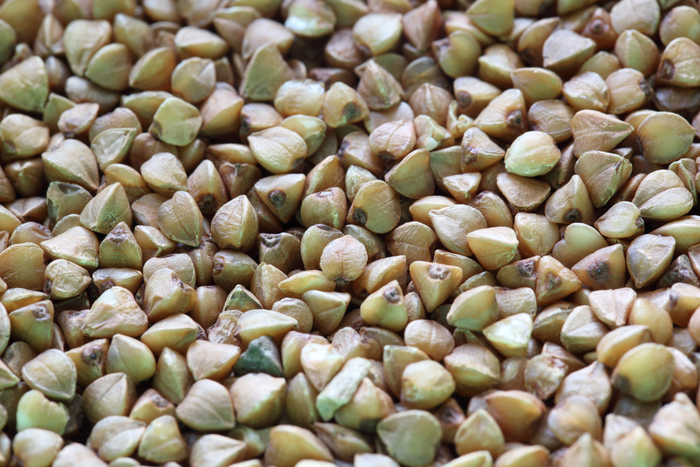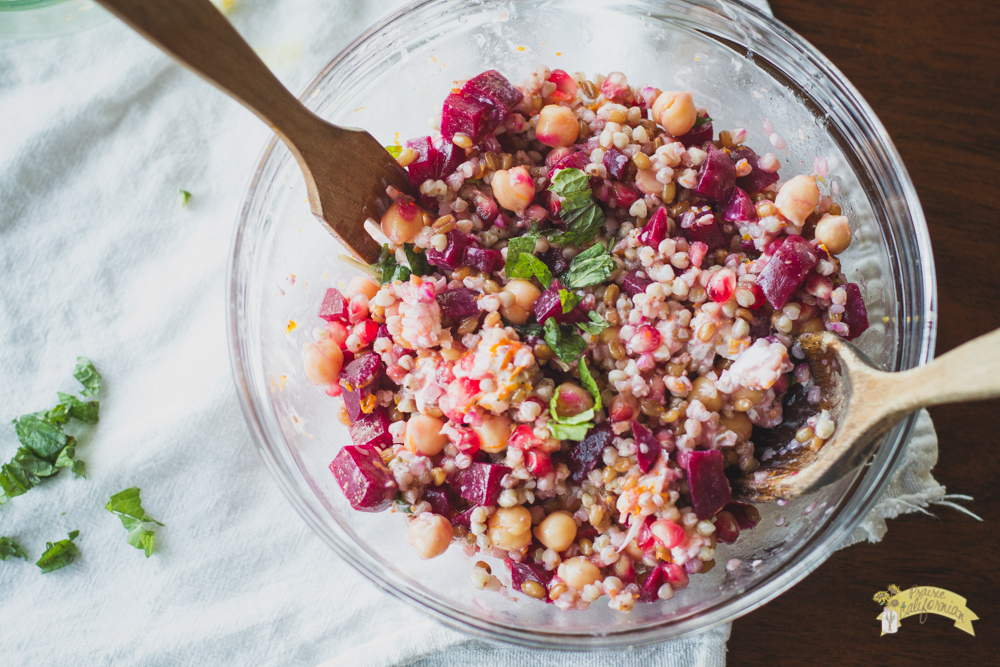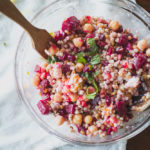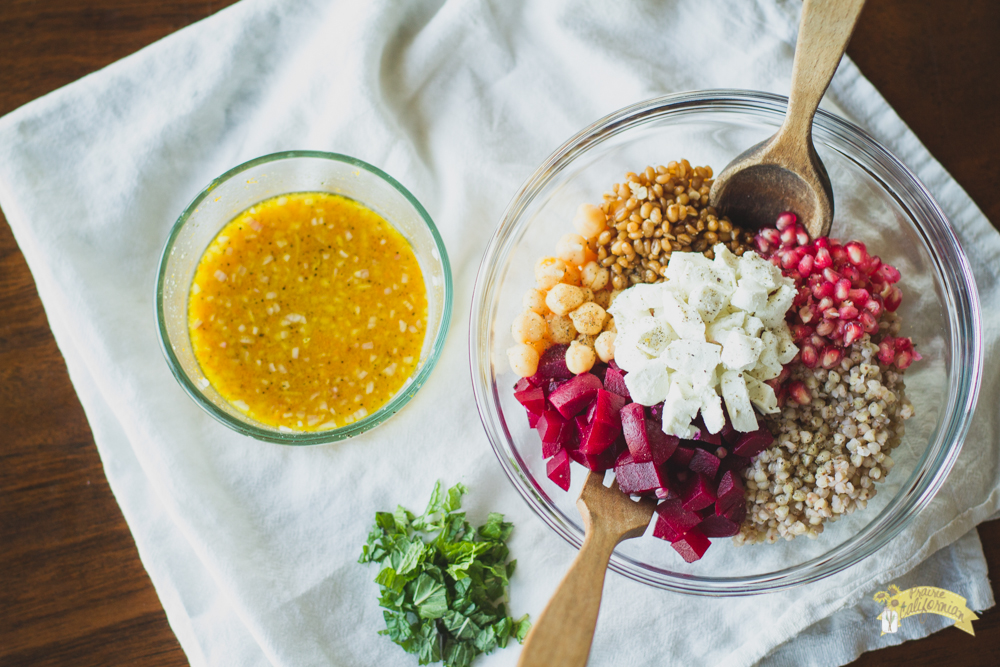
It is no secret, I am a big proponent for whole grains and love to test recipes that encourage us to include more whole grains (versus refined grains) in our diets! I was super excited when Clare from Oaknook Farms in Manitoba, Canada got in contact with me to feature buckwheat. To be honest, I had no idea what buckwheat even was!? I had heard of it, but never really researched it too much. So if you’re like me, here’s a little background…
“Buckwheat has been providing essential nutrients, vitamins, energy, and fiber to humanity for approximately 8,000 years. Here in North America, buckwheat first hitched a ride with European colonists and, since that time, can be found growing in just about every corner of the globe. As a short-season crop that performs well in various soil conditions, buckwheat can perform to keep weeds at bay and to keep soil erosion to a minimum while fields “rest” during crop rotation. Once the flowers have yielded buckwheat groats and it’s time to harvest, the plant stalks can be dried further and used as straw for livestock, or the entire plants can be tilled under to help next year’s soil retain more moisture. Buckwheat groats are shaped almost like a pyramid, or a triangle with a rounded bottom and gently tapered sides.” — From Whole Grains Council
BUCKWHEAT: OAKNOOK FARMS
Manitoba, Canada
When did you start farming? What brought you into farming?
Clare grew up on a farm just a few miles from Justin. Justin grew up on the farm and has always worked on their family’s operation but officially started getting an income from the farm around the year 2000.
What chores did you have growing up on the farm? Are there any differences between your farm now and your farm when you were a kid?
I (Clare) raised chickens for eggs for some pocket money, ran the combine, picked stones, gathered small square bales, ran errands, drove the grain truck (rarely) and swather (rarely). Justin did everything from running all kinds of tractors and equipment (combines, swathers, stone pickers, cultivators, harrows and the sprayer) to handling livestock (cattle).
The farm has grown to be quite large since Justin was a kid. His parents started with approximately 800 acres when they married in 1978. Justin, the oldest of 3, was born in 1982. The farm is now 17,000 acres (rented and owned) between Wayne and Justin.
Who farms with you and what are their roles?
We farm with Justin’s parents, Wayne and Gaylene.
Justin: Agronomy, spraying, marketing, land management, human resources
Wayne: Daily operations, equipment/machinery management, land management, human resources (some)
Gaylene: Accounting and payroll (semi-retired from farm work… she used to do a lot more but has choosen to focus on her writing now)
Clare: Accounting, payroll, agronomy (less than I used to do since kids have come along), advertising, events and staff bonuses, running combine (rarely now that the kids are here and I miss it so, so much)
What has been the hardest part of farming for you? The most satisfying part of farming?
The long hours. I didn’t mind them before we had kids but now that we have two little girls it is hard to be a “single-married-Mum” for most of the year. Also, keeping on top of everything… farming is more of a “business” now a days than it has ever been. There is so much paperwork, so many different marketing choices, so much to report to the government… it’s a challenge to remember to get everything done on time and still make sure the day to day operations are running smoothly on the farm. The most satisfying part is filling the bins at harvest time! Being your own boss is pretty awesome too… we don’t have to answer to anyone! Haha! Trying new crops that have never been grown in the area out and getting good results with them.
What crops (or animals) do you grow and why?
There was always cattle on the farm but last December we sold 95% of them because the price was good and we want to focus on grain production more. Justin and I don’t have an interest in cattle like Wayne did (does). We grow wheat, oats, barley, hemp, buckwheat, canola, soybeans, peas, corn, sweet clover and make some hay to sell too.
What do you think was the most useful advance in farming such as machinery, genetics, chemicals, etc?
GPS technology has played a huge role on our farm in the way that we apply fertilizer. We have our fields mapped & soil tested by a local crop consulting company (360* Agricultural Consulting (Roblin, MB)) and then only apply large amounts of fertilizer to where it is required and cut back in areas that are already very fertile. This has helped us save on fertilizer costs and be responsible with over-application which can be harmful to the environment. We also use GPS on the tractors that seed the crops, helping us to cut down on overlapping and on the sprayer too. Having access to newer machinery that we can use GPS with has been a blessing too!
Genetics have come a long way too. We grow wheat now that has been bred to produce more bushels per acre than it did 10 or 20 years ago. And it’s not even Genetically Modified. It has just been bred to be better by smart humans!
What is your favorite thing to do with a food crop you grow?
I like to bake with wheat flour! But I also love to use hemp in smoothies, on salads, in granola bars and in trail mix. I have also used hemp protein powder in the past when I was working out a lot and loved it. We sell our hemp to Manitoba Harvest and they have been coming out with a ton of new products lately. Their website is a great resource for recipes. Buckwheat is a huge cultural ingredient in our area. We come from a predominantly Ukrainian area. When Ukrainian settlers first came to Canada they were sold 160 acres for $10 and had to have a homestead built on it within a year. Lots of them ended up in our neck of the woods (literally) and spent YEARS clearing the trees and rocks off their land by hand to settle the area. Buckwheat is used in their soups and stews and most iconically in buckwheat cabbage rolls. I am not sure if they grew buckwheat at home in Ukraine or if it was discovered here. I would say that it is a relatively new crop here and not a lot of farmers grow it but it seems to have found it’s place in their kitchens! I only use buckwheat in soups and stews but I eat it up quickly if it is served to me while I’m out… it is so delicious and healthy.
Any memories you want to share about this feature ingredient?
Almost every year when we harvest hemp, there is a combine “fire”. Generally there is never any fire, just a lot of smoke. Hemp is a very fibrous plant and harvesting it is hard on equipment. It likes to wrap around moving parts in the machine. One year, when I was bringing supper to the field for my hubby, I drove up to the field and he has literally just started and had only gone about 100 ft in to the field with the combine and there was already smoke! Good thing I came then because he stopped for his supper and was able to find the source of the smoke too which he didn’t know about until he got out of the cab!
What is one message you’d like to get across to the general public about what you do?
We grow food safely for their family. And it is a lot of hard work. It would just be nice to have the respect of the public, which I don’t think farmers have at the moment. As a consumer they get to choose what foods to eat from what methods of farming they feel is right. But that doesn’t mean that they should bash other people or farmers for eating/producing food with another method. My husband misses out on supper at the table with his two little girls almost every evening from April until October so that the men and women with 9-5 jobs (whose work is also important to society) can go home to their families and have a healthy supper together at their table, that they purchased at a grocery store with more choices on it’s shelves than anywhere else in the world!
What advice would you give to anyone interested in getting into farming?
Be sure that you are ready to be a jack-of-all trades. You have to be good at LOTS of different things or be willing to pay someone else to do what you don’t do. And be ready for long hours. As with any business, the owner works from sun up until sun down. They don’t stop at 5 pm like their employees do. There is a lot of behind the scenes work involved in farming or owning any business that involves more than just driving a tractor up and down a field. There is paperwork to do as well.
I decided to make a fall or winter inspired buckwheat salad with beets, pomegranates, and goat cheese all topped with a citrus vinaigrette. The flavor combinations of this salad were wonderful. The longer it sat, the longer the beets deepened it to a dark pink color so it is recommended to toss and serve immediately.
PrintBuckwheat Beet Salad
a winter inspired salad featuring buckwheat, beets, and pomegranates topped with citrus vinaigrette
- Prep Time: 20
- Cook Time: 10
- Total Time: 30 minutes
Ingredients
- Buckwheat Beet Salad
- 1 cup buckwheat, cooked
- 1/2 cup wheat berries, cooked
- 1 cup garbanzo beans
- 1 cup beets, canned or if fresh, fully cooked
- seeds of 1 pomegranate
- 2 ounces goat cheese
- pinch of chopped mint
- Citrus Vinaigrette
- 1/4 cup fresh squeezed orange juice
- zest of one orange
- 1 teaspoon honey
- 1 teaspoon balsamic vinegar
- 1 teaspoon dijon mustard
- 1 tablespoon olive oil
- 1/2 shallot, minced
- salt and pepper to taste
Instructions
- Combine all salad ingredients in a large bowl.
- Combine all dressing ingredients in a medium bowl. Whisk to combine.
- Pour dressing over salad and gently toss to combine.
- Serve immediately to keep beets from bleeding into salad. Garnish with fresh mint if desired.
Notes
- I keep cooked whole grains like buckwheat or wheat berries pre-cooked in the freezer, makes for easy thaw and use in recipes!
Nutrition
- Serving Size: 6
This post is part of my Thirty Days of Food series where I am writing about food and farming for the entire month of November, to find out more about it all or how to follow along, visit my Thirty Days of Food page to find more great recipes with farmer features!

